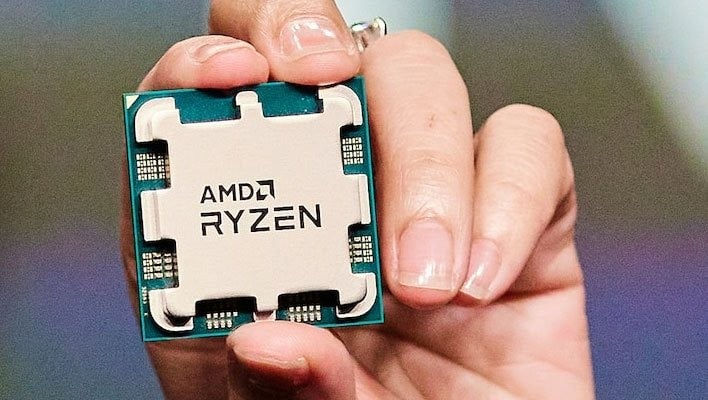Motherboard Makers Spill The Beans On AMD's Zen 4 AM5 Platform And It Sounds Great

That design philosophy might even extend to the company's next-generation motherboard chipsets, if a report over at China Times is to be believed. The report claims that the first Socket AM5 chipset for AMD's Zen 4-based Ryzen 7000-series processors will (predictably) be called the X670, and that it will use two chiplets to provide double the I/O compared to the mid-range B650 chipset.
It's not clear from the report whether each chiplet will have its own link to the CPU socket or if they'll have to share, but either way, having a pair of I/O chiplets on the motherboard should give AMD X670 boards an immense amount of external I/O. That is, assuming that those chiplets are as capable as the ones in X570.
The X570 chipset supports up to an additional 24 PCIe lanes, eight USB 3.1 Gen 2 ports, and eight SATA ports; doubling those numbers starts to provide I/O on the level of an HEDT machine—perhaps a comfort to those feeling let down by the apparent demise of enthusiast-focused HEDT platforms.

That's not necessarily a guarantee, though; the chips used in AMD's X570 are its own cIODs from its Zen processors, while the China Times report says that the new chipsets will be produced by AsMedia. That might be causing some red lights to flash in the minds of savvy hardware enthusiasts, but it's probably not a cause for concern; the company's X470 and X370 chipsets were also made by AsMedia.
Also, even though Zen 4 is known to support PCIe 5.0, it's likely that the lanes off the chipset will be PCIe 4.0 at a maximum, and possibly just PCIe 3.0. That is probably not a concern, ultimately, as all those PCIe lanes will have to share a relatively narrow interface to the CPU, anyway.
It's also known that Socket AM5 will not support DDR4 memory at all. That could be a problem for AMD if DDR5 prices stay stratospheric after the launch of its new platform, although we feel it's important to point out that there's room for AM5 to be AMD's enthusiast-centric high-end platform on release.
After all, there's already piles and piles of Socket AM4 boards and CPUs out there, and it's not like the release of Socket AM5 and Zen 4 will suddenly make Zen 3 slow. That idea particularly makes sense in the face of the likelihood that the high-end X670 could be the first motherboard chipset released for Zen 4, just as with every previous generation of Ryzen processors.

